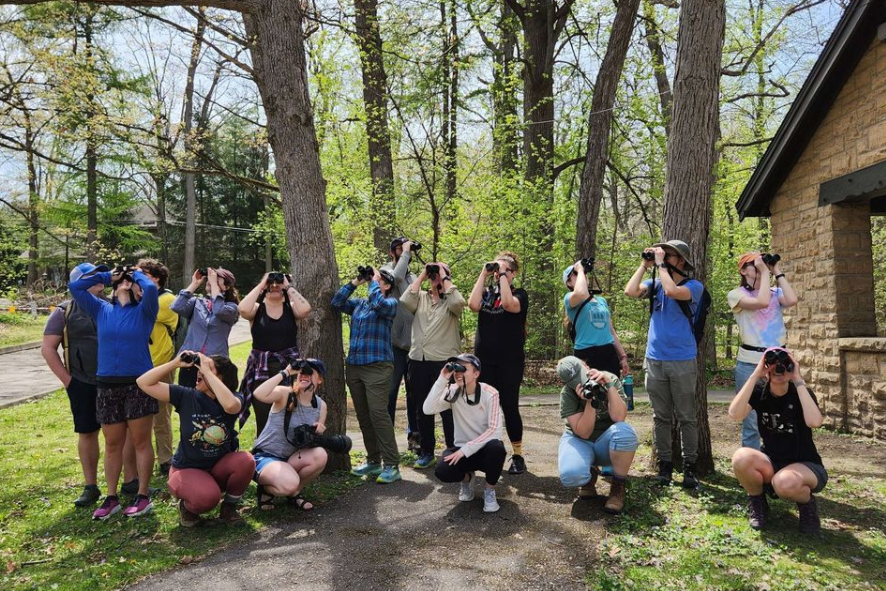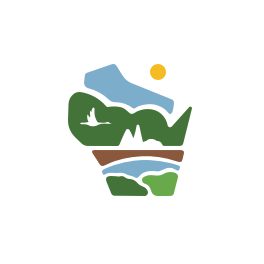Bird Protection Fund
The Bird Protection Fund supports the highest priority conservation needs for Wisconsin’s birds throughout their lifecycle – from their breeding grounds in Wisconsin to their migratory habitat in Central and South America.
Projects supported by the Bird Protection Fund include conservation of Wisconsin’s most threatened and endangered bird species; creation and protection of critical breeding, stopover, and overwintering habitat; research and monitoring; and education and outreach.
Grantmaking Priorities:
- Projects that directly address high priority conservation needs for Wisconsin’s birds.
- Projects that align with state, regional, and national bird conservation plans and strategies.
- Projects that leverage resources and partnerships.
How to Apply:
- This program does not accept unsolicited proposals.
2024 Projects
1. Advancing Bird Conservation within Wisconsin’s Important Bird Area System
Wisconsin’s Important Bird Area (IBA) system brings partners and stakeholders together to coordinate and plan management, stewardship, and monitoring activities that will benefit vulnerable bird species, ensuring access to essential habitat. Funds will provide financial and technical support for IBA partnerships that address widespread bird population declines, with a special focus on grassland birds. Partner: Wisconsin Bird Conservation Partnership
2. Audubon Conservation Ranching
Audubon Great Lakes is in the second year of working to improve grazing and grassland habitat management practices across at least 12,590 acres in Wisconsin, prioritizing farms within Important Bird Areas, Wisconsin Grassland Bird Conservation Areas, and priority areas identified in the Wisconsin State Wildlife Action Plan. These working lands will deliver significant benefits to grassland birds, wildlife, water, soil, and people, and specifically address rapid population declines of species such as upland sandpiper, Henslow’s sparrow, eastern and western meadowlark, and bobolink. Partner: Audubon Great Lakes
3. Bird Conservation for All
The BIPOC Birding Club of Wisconsin hosts monthly birding events in Madison and Milwaukee and special events around the state that bring BIPOC (Black, Indigenous, and People of Color) and allies together to enjoy and experience the birds and natural wonders of Wisconsin. This year’s grant will support the club’s efforts to make meaningful connections with schools and organizations in the Madison area and provide birding experiences for students. This will occur via grants to provide transportation to green spaces through the club’s pilot program, “Operation Green Space.” Partner: BIPOC Birding Club of Wisconsin
4. Building an Inclusive Bird Conservation Partnership for Milwaukee
This project will develop a partnership to achieve Urban Bird Treaty City designation, enabling Milwaukee partners to access more funding and pursue landscape-level initiatives needed to reverse bird declines. A special focus will be on diversity, equity, and inclusion to ensure historically underrepresented groups in bird conservation and birding are a part of the process from the beginning. Partner: Lake Michigan Bird Observatory
5. Endangered Bird Conservation
Wisconsin is home to two endangered birds, the piping plover (federally listed) and the Kirtland’s warbler (state listed). The Cat Island Chain near Green Bay is home to one of only three Wisconsin piping plover populations. Last year for the first time, four chicks were captive-reared and then released at Cat Island. Additionally, the overall Great Lakes piping plover population had the most nesting pairs (80) since they were listed as endangered in 1986. Funding will support the Cat Island Chain team and contribute to a multi-partner collaborative endangered species recovery project.
The Kirtland’s warbler has nested in Wisconsin for over 15 years. Funding will support continued population recovery and conservation of the species in Wisconsin, including through monitoring efforts. The state is crucial for the birds’ population expansion beyond its core breeding range in Michigan because it provides the 5- to 20-year-old jack pine stands necessary for breeding. Partner: Wisconsin Department of Natural Resources – Natural Heritage Conservation
6. Lincoln Creek Habitat Research and Restoration
Nearby Nature Milwaukee is focusing on habitat restoration, community engagement, and raising awareness of wildlife habitat in urban green spaces and is committed to restoration and revitalization of green spaces along Lincoln Creek. They hope to use habitat research to inform their restoration efforts, to improve the habitat for birds and other animals, as well as use this knowledge in their education and community engagement efforts. Partner: Nearby Nature
7. Long-term Bird Monitoring at Restoration Sites on the Oneida Nation Reservation
This collaborative volunteer bird monitoring program co-led by Northeastern Wisconsin (NEW) Bird Alliance has an impressive track record of surveying birds at restoration sites on the Oneida Nation Reservation. This year’s funding will support community outreach events and data collection and analysis at existing bird monitoring locations. It will also help provide land management guidance for the Oneida Nation, expand understanding of what constitutes bird conservation though a formalized Oneida cultural exchange, and build bridges between the Oneida and non-Tribal communities. Partner: Northeastern Wisconsin (NEW) Bird Alliance
8. Open Spaces, Bird-Friendly Places
This project will remove 45 acres of dense, woody thickets from two remnant prairies in the Southwest Savanna region, Borah Creek and Eldred Prairies in Grant County. This work will improve habitat for the following grassland birds of Greatest Conservation Need: dickcissel, bobolink, and eastern and western meadowlark. Partner: The Prairie Enthusiasts
9. Save Our Songbirds: Bird Protection in Southern Wisconsin through Community Outreach
SOS Save Our Songbirds and Southern Wisconsin Bird Alliance are working to raise awareness about songbird decline in Wisconsin and spur action at home. By providing basic Wisconsin-tailored information, hands-on events, discounts and supplies, they’re helping people make small changes at home to give birds the habitat they need year-round and reduce threats. Partner: Southern Wisconsin Bird Alliance
10. Whooping Crane Reintroduction
The International Crane Foundation is committed to the long-term reintroduction and protection of migratory whooping cranes in eastern North America. Grant funding will support captive breeding and rearing of chicks using costume-rearing and parent-rearing methods, specialized veterinary care, research and monitoring of reintroduced whooping cranes in Wisconsin, and community education and outreach. Partner: International Crane Foundation

Great Wisconsin Birdathon
Ways to Give
- You can help us help the birds by making a donation to our Bird Protection Fund.
- Consider making a gift to the Birds of Wisconsin Legacy Fund, an endowment fund that provides sustainable funding for priority projects of the Bird Protection Fund.
- A majority of the funds raised through the Bird Protection Fund come from the Great Wisconsin Birdathon annual fundraising event. Help out by forming a team to count birds and raise money for bird conservation.

Lindsey Taylor
Conservation Coordinator
(608) 409-3145
Lindsey.Taylor@WisConservation.org
Lindsey Taylor (she/her) supports NRF’s conservation and environmental education efforts, including facilitating conservation projects with partners, and coordinating the Diversity in Conservation Internship Program and the DEIJ Community of Practice for Wisconsin Conservation.
Banner photo by Hillary Thompson.
Great Wisconsin Birdathon photo by Caitlyn Schuchhardt.

